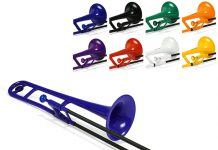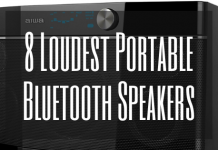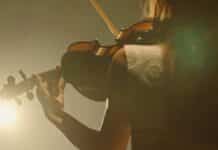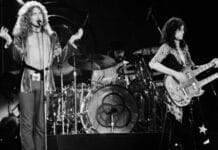Baroque music is one of the most fascinating and complex classical styles, with intricate harmonies, ornate melodies, and dramatic contrasts. But what characteristics does Baroque music set it apart from others? Let’s explore the key characteristics of Baroque music, from its use of monody and basso continuo to its complex harmonies and virtuosic instrumentation. Join us as we journey through this fascinating period in musical history!
Contrast
One of the most notable characteristics of Baroque music is the use of contrast. This can be seen in the difference between different instruments, sections of a piece, or parts of a single melody. For instance, in a Baroque concerto, the soloist and orchestra often alternate, playing different music sections and contrasting the two.
Monody and Basso Continuo
Other defining characteristics of Baroque music are monody and basso continuo.
Monody is a style of music in which a single voice or melody is accompanied by simple chords rather than a complex polyphonic texture. Basso continuo, or “continuous bass,” refers to a style of accompaniment in which a bass line is played continuously throughout a piece. In contrast, the other instruments play improvised or pre-written harmonies.
Polyphony & Counterpoint
Polyphony, or multiple voices or melodies, allowed composers to create complex harmonies as it features multiple independent melodies. On the other hand, counterpoints combine two or more melodies played simultaneously, contributing to the music’s harmony and overall structure. These techniques were used to great effect in the music of J.S. Bach, considered one of the greatest Baroque composers.
Basso Continuo
Basso continuo was also an essential element of Baroque music. This accompaniment style involved a bass line played by a cello, bassoon, or other low instruments, along with a keyboard instrument like a harpsichord or organ. The keyboard would play the chords and harmonies implied by the bass line, often improvising on the spot.
Mood / Affect
Baroque music was often designed to evoke a specific mood or emotion in the listener. Composers used a technique called “affect” to achieve this. This involved using certain musical devices, such as fast or slow tempos, major or minor keys, and dissonance or consonance, to create a particular emotional response in the listener.
Harmony and Tonality
One of the key characteristics of Baroque music is its use of complex harmony and tonality. This involved the use of chords and harmonic progressions to create a sense of tension and release. Composers like Bach and Handel used these techniques to great effect in their music, creating complex and intricate works that are still admired and studied today.
Texture
Baroque music also featured a complex texture, often with multiple voices or instruments simultaneously playing different melodies or harmonies. This created a rich and intricate sound unique to the Baroque era.
Melody
Melody was also a key characteristic of Baroque music. Composers often created complex and ornate melodies to showcase the performer’s virtuosity. These melodies were often embellished with ornaments like trills, mordents, and turns, adding to the music’s complexity and beauty.
Ornamentation
Ornamentation played a significant role in Baroque music. Some of the most common ornaments used in Baroque music include trills, mordents, and turns. These embellishments were used to decorate and elaborate on the melody, creating a more ornate and complex sound.
Dynamics
Dynamics, or the variation of loudness or softness in music, is essential to Baroque music. Baroque composers used dynamics to create contrast and express emotions in their compositions. They accomplished this by using a range of dynamic markings, such as forte (loud), piano (soft), mezzo forte (moderately loud), mezzo piano (moderately soft), and many others.
Furthermore, Baroque music is also known for its use of terraced dynamics, which involves sudden changes in volume rather than gradual transitions. This technique was often used in Baroque orchestral music, where different orchestra sections alternate between loud and soft passages, creating a dramatic effect.
Sonatas
The sonata was a popular instrumental genre during the Baroque period, with composers such as Bach, Handel, and Vivaldi writing many notable examples. Sonatas were typically composed for one or more solo instruments accompanied by basso continuo, and they often had three or four movements.
Sonata de Camera
The sonata de camera, or chamber sonata, was intended to be played in private settings, such as at home or in small gatherings. These sonatas were usually written for two to four instrumentalists and included dance-like movements, such as allemandes, courantes, and gigues.
Sonata da Chiesa
The sonata da chiesa, or church sonata, was a type of sonata that was intended to be played in church. These sonatas were usually more serious in tone than the sonata de camera and often included movements such as preludes, fugues, and slow, lyrical sections.
Music Vocal Styles
In addition to instrumental music, Baroque composers also wrote vocal music in various styles, including the cantata, oratorio, and concerto grosso.
Cantata
The cantata was a vocal work typically written for solo voices or voices accompanied by instruments. Cantatas often included recitatives, arias, and choruses based on religious texts or themes. Johann Sebastian Bach wrote many notable cantatas, including the famous “Ich habe genug” and “Wachet auf, ruft uns die Stimme.”
Baroque Oratorio
The oratorio was a large-scale vocal work similar to opera but without staging or costumes. Oratorios were often based on religious texts or stories and included recitatives, arias, and choruses. George Frideric Handel’s “Messiah” is perhaps the most famous example of a Baroque oratorio.
Concerto Grosso
The concerto grosso was an instrumental work featuring a concertino (a small group of soloists) and a ripieno (a larger ensemble). Concerto grossi often included three movements and featured virtuosic solo passages for the concertino. One of the best examples of a concerto grosso is Antonio Vivaldi’s “Four Seasons,” which features a solo violin accompanied by a string orchestra.
Baroque Era Instruments
The Baroque period of music saw the development of several new instruments and the refinement of existing ones. Some of the most important Baroque tools include the following:
Harpsichord
The harpsichord was a keyboard instrument widely used during the Baroque period. It is similar to a piano, but instead of using hammers to strike the strings, it plucks them with a quill.
The harpsichord was highly valued for its ability to produce a bright and clear sound, which was perfect for the highly ornamented music of the Baroque period. The harpsichord was a solo instrument in larger ensembles, such as the Baroque orchestra and chamber music groups.
Organ
Another important keyboard instrument during the Baroque period was the organ. The Baroque organ was highly complex and featured multiple keyboards, pedals, and stops that could be adjusted to create a wide range of tones and colors. The organ was often used in church music, whose majestic sound accompanies the choir and leads congregational singing.
Violin
The violin was one of the most important instruments of the Baroque period and was used extensively in orchestral, chamber, and solo music. The Baroque violin had a flatter bridge and a different bowing technique than the modern violin, which gave it a different sound.
Trumpet
The trumpet was another critical instrument used extensively in Baroque orchestral and choral music. The Baroque trumpet was shorter and had no valves, which limited the range of notes it could play.
Flute
During the Baroque period, the flute was made of wood and had a softer, mellow sound than the modern metal flute. It was used in both solo and ensemble music.
Oboe
The oboe was a popular Baroque orchestral and chamber music instrument. The Baroque oboe had a narrower bore than the modern oboe, which gave it a more focused sound.
Bassoon:
The bassoon was another popular Baroque instrument used extensively in orchestral music. The Baroque bassoon had a more conical shape than the renaissance and medieval predecessors, with a thicker wall and larger diameter. This gave the instrument a darker, more resonant tone that suited the rich harmonies of Baroque music.
The Baroque bassoon also had more keys, making it a more versatile tool that could play a broader range of notes and perform more complex passages. Baroque composers such as Vivaldi, Handel, and Bach often featured the bassoon in their compositions, using its unique sound to create contrast and depth.
Conclusion
The Baroque period was a time of innovation and experimentation in music, with composers and musicians pushing the boundaries. The resulting music was complex, emotional, and richly textured, reflecting the drama and passion of the era in which it was created.
Table of Contents






